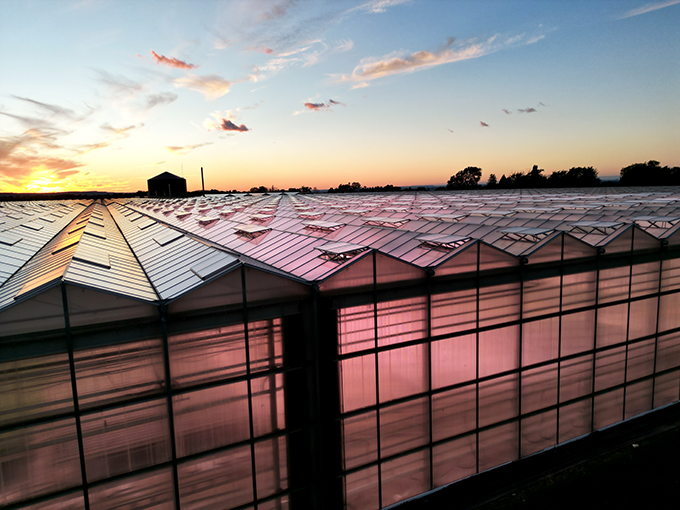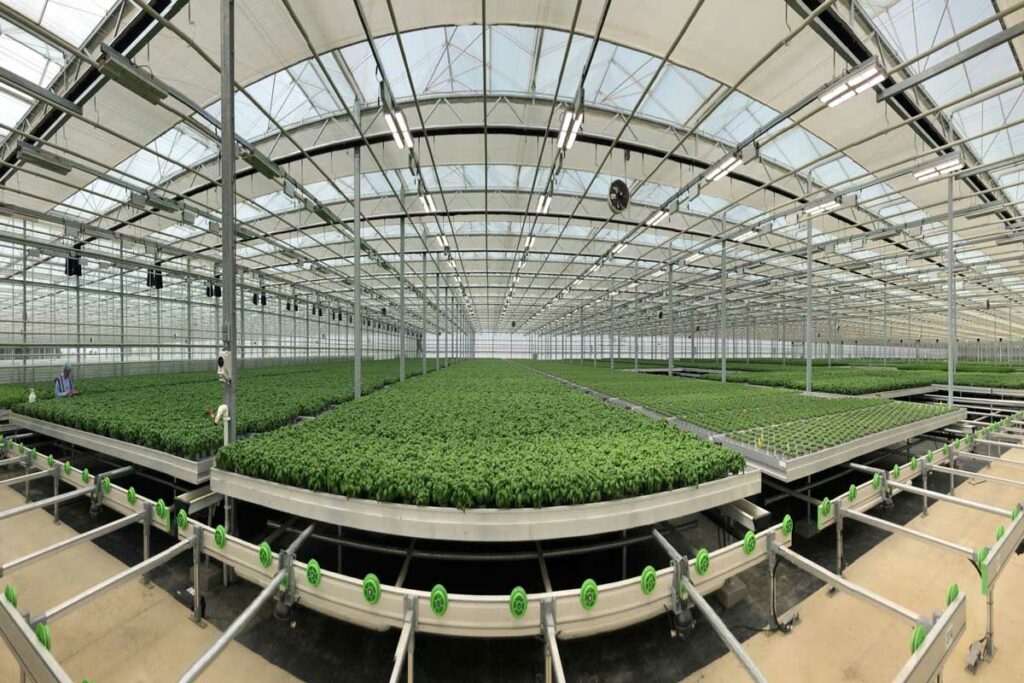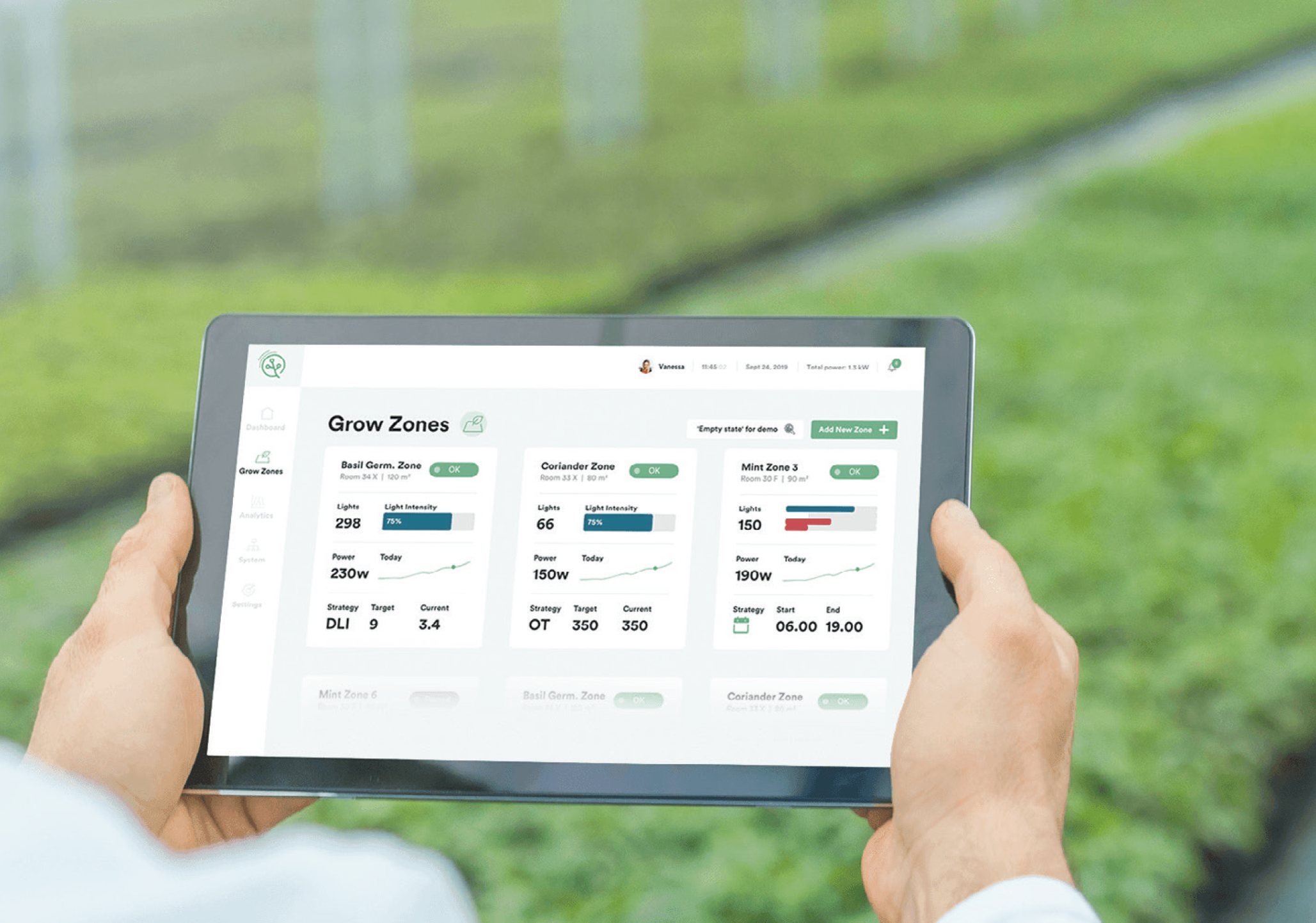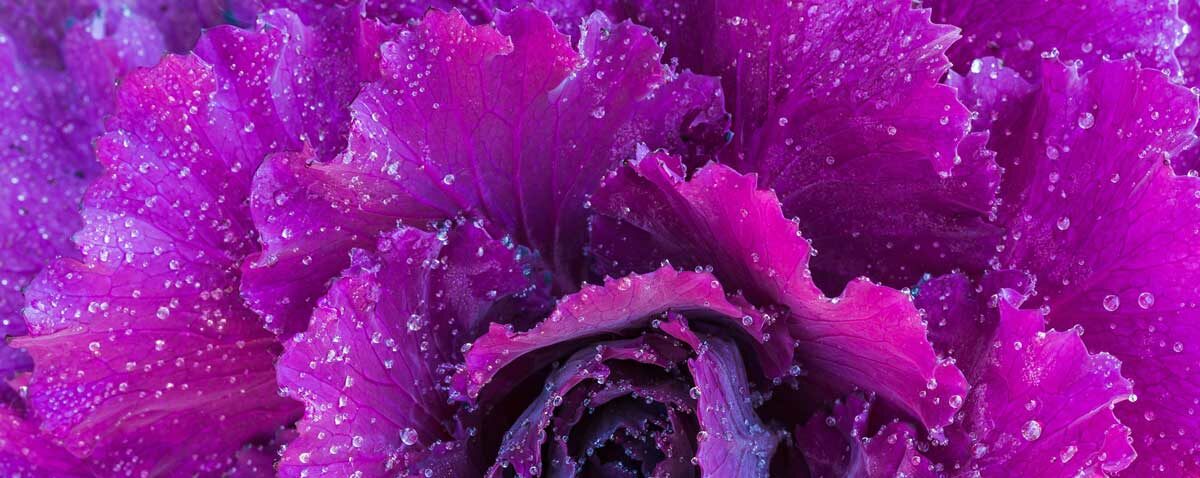Research
Articles
When it comes to lighting a greenhouse or any indoor grow facility, the number of factors to consider can seem overwhelming. Should you choose intelligent LEDs? Should you go old-school with HPS? How do you ensure crops get enough light each day without wasting energy? Where should fixtures be placed to ensure light uniformity? A good grow light manufacturer will have experts to help you with all of this and more – before you buy – by building a comprehensive greenhouse light plan tailored to your facility and business goals. The purpose of the plan is to map out the light each crop (and plant) will receive, including the light intensity, uniformity and spectra that will be targeting them.
What is a Greenhouse Light Plan?
The short answer is that a light plan provides an accurate account of how many lights you will need for your specific geographic location and greenhouse footprint. But a good greenhouse light plan does so much more. It helps you:
- Define your supplementary greenhouse lighting needs based on natural light simulations and daily light integral (DLI) analyses.
- Ensure the best setup of your lights and light zones.
- Save energy by optimizing your energy usage.
Building a Light Plan: Important Questions to Ask
- What is my target light level?
This will be determined by the light planning specialist according to your crop types and geographic location.
- How many lights will I need?
This varies by crop type and greenhouse layout. A good greenhouse light plan will provide optimal light for plants, while ensuring you’re not wasting energy lighting non-grow areas such as aisles.
- Where should my lights be installed?
This is determined by the layout of the crops and their individual light level and uniformity targets, and it will dictate how far apart the lights should be and how close they should be to your plants. Fixtures must be hung in such a way that shadows from the lights are minimized and light covers crops evenly and unimpeded.
- How will my power costs be affected?
A professionally crafted greenhouse light plan will be optimized to direct the right light directly onto your plants without wasting energy. If you choose to install new LEDs or are considering an upgrade, intelligent LED lighting and controls are proven to drive down energy costs versus traditional HPS lighting. And remember to check out the LED rebates and incentives available in your region. You may be shocked at how much money you can save on both the LED fixtures and the controls. Simply refer to our eBook for Canada to find out what’s available to you.
The Importance of DLI and Light Uniformity in Greenhouse Light Plans
Daily light integral (DLI) – which is a function of both light intensity and duration – along with light uniformity, play key roles in building the best light plan for your business.
Intensity or DLI
This is a measurement of the total amount of photosynthetically active radiation (PAR) that is delivered to a plant in a 24-hour period, and it is measured in moles of photons (mols). Different plants have different light level requirements for optimal growth. Even the sunniest regions may not be getting enough DLI at certain times of the year for high-light crops like tomatoes, peppers and cucumbers. Historical data on your geographical location will provide an idea of the existing DLI per season, and your light plan will map out how much additional DLI is required via supplemental lighting to meet your crop needs.
Lighting Uniformity
This takes into consideration the average lighting level for the whole grow space and the maximum lighting level for the space. From these two numbers, the light planning specialist will ascertain how uniform the light is. The smaller the difference between the two, the better. A lot of light plans do not include uniformity metrics, but they are important.
A successful light plan will prioritize concerns like the light intensity and spectrum you need to produce the desired growth results, then calculate the number of fixtures and power required to deliver uniform light over the plants. Often lighting solutions evaluate photosynthetic photon efficacy (PPE), which is the PAR photon output of a light source. However, this has its limitations, as PPE excludes valuable wavelengths outside of the PAR range, like far-red, which has been proven to have a positive effect on plant growth.
To ensure your crop production is consistent, photosynthetic photon flux density (PPFD) provides spot measurements over specific locations on the canopy within PAR.
Beware of Misleading and Inflated Numbers
In a competitive situation, some vendors may be tempted to manipulate the simulation or inflate the numbers to show better proposed results. So work with a company you can trust. Heliospectra was founded by plant scientists and biologists who understand the needs of plants and growers, since they are growers themselves. Our light planning specialists can help you:
- Analyze your supplementary lighting needs based on natural light simulations and DLI and light uniformity data.
- Optimize your light placement and light zones.
- Achieve your crop goals with customized light plans and lighting strategies.
- Reap the benefits of energy savings and achieve ROI faster.
Summary
It is essential to have a greenhouse light plan for your facility, but you don’t have to do it yourself. Work with a reputable company that includes a light plan as part of their service – one that works with you to ensure your light plan works for your crops and your business.
Get in touch with us!
From custom light planning, to tailored quotes, and everything in between,
our team of horticulture experts are always ready to assist.







